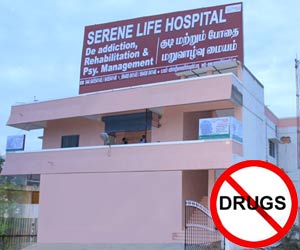Increased need of hospitalization and requirement of respiratory support is found in patients brought to emergency departments more than once in a year for treatment of opioid drug overdoses.

The authors note that the increased use of opioid drugs for pain management – reflected in a quadrupling in sales between 1999 and 2010 – has been accompanied by a rising incidence of opioid overdoses, leading to an 183 percent increase in ED visits for such overdoses nationwide from 2004 to 2011. Previous studies of overdose risk factors have examined limited populations, and their lack of information on factors associated with subsequent hospitalizations and near-fatal events – defined as the use of mechanical ventilation to support respiratory function – could impede efforts to balance the use of opioids for pain management with the avoidance of overdoses and other adverse events.
The current study was designed to better define the impact of ED visits for opioid overdoses, with a focus on those with more than one overdose in a year, and to determine whether frequent overdose visits were associated with more hospital admissions, near-fatal events and deaths. The investigators analyzed information from state databases covering ED visits and inpatient admissions in Florida and California during 2010 and 2011. They identified almost 20,000 adults who were admitted at least once in 2010 for overdose of any opioids, including both prescription pain medications and illegal drugs like heroin. Almost 1,400 – 7 percent of the total – had two or more ED visits for overdose during the year following the first, with some having as many as five; and those individuals accounted for 15 percent of all overdose visits.
Analysis of potential risk factors identified several that were associated with repeat visits for overdoses – including low income, public insurance through Medicare or Medicaid, and additional health conditions such as alcohol or drug dependence, psychiatric or neurological illness, and chronic pulmonary disease. Also associated with an increased risk were being middle aged, white and male. While around half of patients with any ED visits for opioid overdose were hospitalized, those with frequent visits were more likely to be admitted.
About one tenth of all overdose visits involved ventilator-requiring non-fatal events – again with a greater incidence among those with frequent visits – and the overall death rate was 1 percent. Analysis of hospital charges associated with opioid overdose ED visits – available only for Florida – revealed total costs of $208 million during the one-year follow-up period, with 92 percent of those charges resulting from patients who had more than one hospitalization
"Every incidence of opioid overdose is theoretically preventable, and our findings underscore the importance of integrated and multifaceted strategies to reduce overdoses and the resulting use of health care services," says Hasegawa, an assistant professor of Surgery at Harvard Medical School. "Our understanding of characteristics that increase the risks associated with the use of opioid pain medications is still limited, so future studies to better define those risks and develop targeted, prevention-oriented care will be essential to improving the care of patients taking these powerful drugs that can be so important for their quality of life."
Advertisement















